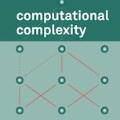Recently, tremendous human-designed and automatically searched neural networks have been applied to image denoising. However, previous works intend to handle all noisy images in a pre-defined static network architecture, which inevitably leads to high computational complexity for good denoising quality. Here, we present dynamic slimmable denoising network (DDS-Net), a general method to achieve good denoising quality with less computational complexity, via dynamically adjusting the channel configurations of networks at test time with respect to different noisy images. Our DDS-Net is empowered with the ability of dynamic inference by a dynamic gate, which can predictively adjust the channel configuration of networks with negligible extra computation cost. To ensure the performance of each candidate sub-network and the fairness of the dynamic gate, we propose a three-stage optimization scheme. In the first stage, we train a weight-shared slimmable super network. In the second stage, we evaluate the trained slimmable super network in an iterative way and progressively tailor the channel numbers of each layer with minimal denoising quality drop. By a single pass, we can obtain several sub-networks with good performance under different channel configurations. In the last stage, we identify easy and hard samples in an online way and train a dynamic gate to predictively select the corresponding sub-network with respect to different noisy images. Extensive experiments demonstrate our DDS-Net consistently outperforms the state-of-the-art individually trained static denoising networks.
翻译:最近,大量人类设计和自动搜索的神经网络被应用到图像脱色上。然而,先前的工程打算在一个预先定义的静态网络结构中处理所有噪音图像,这不可避免地导致高计算复杂性,从而实现良好的脱色质量。在这里,我们提出了动态的可粘性脱色网络(DDS-Net),这是在测试时通过动态调整不同噪音图像的频道配置,实现质量良好脱色,降低计算复杂性的一般方法。我们的DDS-Net通过动态大门增强动态推断能力,可以预测以微不足道的额外计算成本调整网络的频道配置。为确保每个候选子网络的性能和动态大门的公平性,我们提议了一个三阶段的优化计划。在第一阶段,我们培训了一个重量共享的可简化的超级网络。在第二阶段,我们以互动方式对经过培训的可稀释性超级网络进行评估,并逐步将每个层的频道数量与最小解色质量下降相匹配。通过一个单关,我们可以在可忽略的额外计算成本中以可忽略的方式预测地调整网络的频道配置。我们可以得到几个次网络的子网络,在不同的轨道上进行良好的业绩,在不同的预测性模型下,在不同的轨道上,在不同的预测性模型中进行一个稳定的演示。在不同的系统上,在不同的变色变式的模型中进行。




